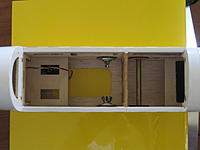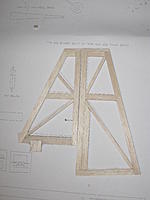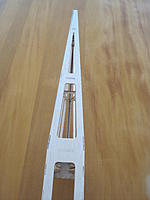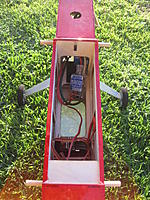Comments (0)
Add Comment
-
 Views: 274
Views: 274
Bare bones. Note sheeted turtle deck and D Box wing -
 Views: 196
Views: 196
The customary pre- maiden pics -
 Views: 209
Views: 209
Front 3/4 view... -
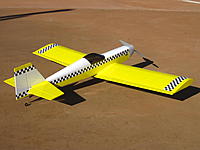 Views: 202
Views: 202
...and rear 3/4 view.... -
 Views: 204
Views: 204
Should be well visible! -
 Views: 208
Views: 208
Top hatch mod. The front of the hatch slips under the cowl, rear is held on by Neodymium magnets. -
 Views: 227
Views: 227
Top hatch removed! -
 Views: 223
Views: 223
Battery tray extended rearwards over the wing.
-
 Views: 297
Views: 297
Cut wing parts from carrier sheets. Sand of the nibs -
 Views: 239
Views: 239
W1 assembly parts -
 Views: 233
Views: 233
Use aliphatic gle to laminate together the W1 parts -
 Views: 239
Views: 239
Pin main spar to position on the plan. Add spar web, W2, W6 and W9- don't glue. Add rear spar and pin down. Position W2 as on plan, square up and glue. Use rib spacing jig ...... -
 Views: 244
Views: 244
to position W3, then W4, gluing as you go... -
 Views: 235
Views: 235
all the way to W9. -
 Views: 250
Views: 250
Add 1/8" sub leading edge and glue to W2 through W9 -
 Views: 242
Views: 242
W1 assembly
-
 Views: 218
Views: 218
Some "Before" shots... -
 Views: 179
Views: 179
...just in case.... -
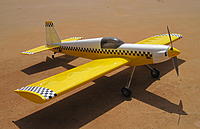 Views: 197
Views: 197
...she ended up... -
 Views: 161
Views: 161
...as a black bag job.... -
 Views: 180
Views: 180
...needn't have worried though! -
 Views: 195
Views: 195
Sticky-back decal sheet from Tower Hobbies -
 Views: 193
Views: 193
Nice fit of wing and hatches to the fuselage -
 Views: 216
Views: 216
Hatches off!
-
 Views: 233
Views: 233
Lower sheeting, ribs and plywood control horn hard point -
 Views: 190
Views: 190
Add glue... -
 Views: 196
Views: 196
Chamfer leading edge and attach, then trim sheeting to size... -
 Views: 181
Views: 181
Top sheeting added... -
 Views: 195
Views: 195
Dubro hinge slot guide- fantastic way to find the centre of the leading edge. Then cut hinge slots and bevel the LE -
 Views: 203
Views: 203
Holes for control horn marked, then drilled... -
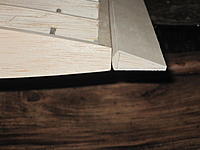 Views: 195
Views: 195
Test fit -
 Views: 201
Views: 201
Large wing!


